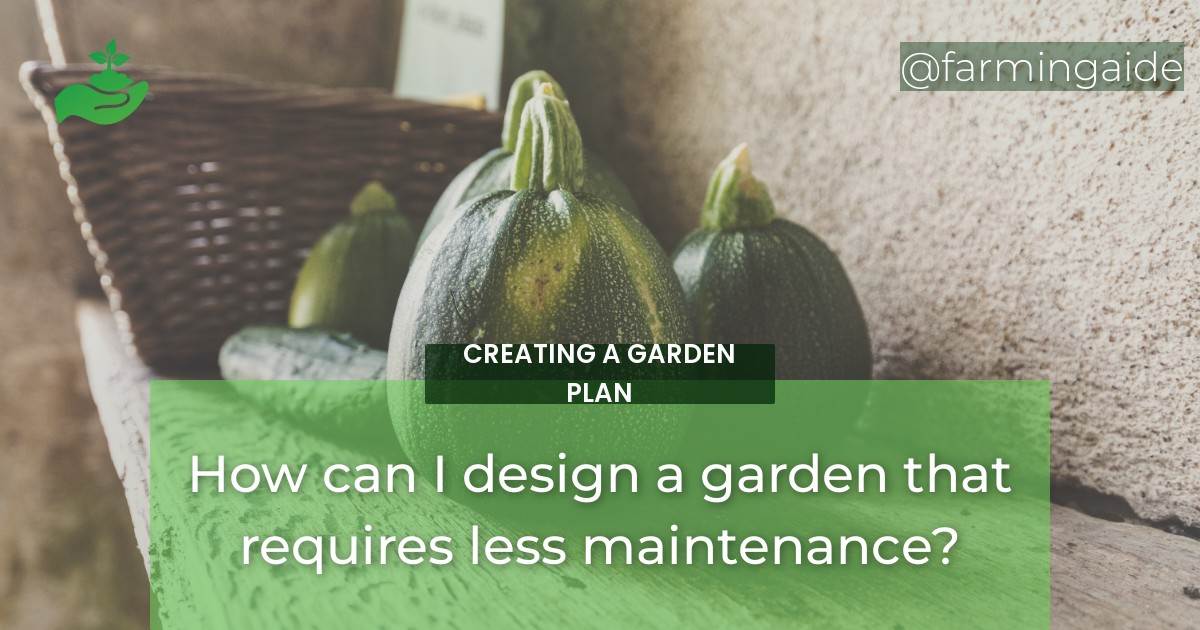If you’re tired of spending endless hours maintaining your garden, it may be time to consider designing a low-maintenance garden. With the right strategies in place, you can create a beautiful outdoor space that requires minimal upkeep.
Strategies for Designing Low-Maintenance Gardens
Plant Selection for Low-Maintenance Gardens
Choosing Perennial Plants
Perennial plants are low-maintenance because they come back each year without the need for replanting. They also require less watering and fertilization than annual plants, making them a great choice for a low-maintenance garden. Some popular perennial plants include:
- Lavender
- Black-eyed Susan
- Daylilies
- Hostas
Incorporating Native Plants
Native plants are well-suited to the local climate and soil conditions, which means they require less maintenance. They are also a great choice for attracting local wildlife like birds and butterflies. Some popular native plants include:
- Wildflowers
- Sage
- Butterfly weed
- Switchgrass
Using Drought-Tolerant Plants
Drought-tolerant plants require less water, making them a great choice for a low-maintenance garden. They are also a great choice for areas with water restrictions. Some popular drought-tolerant plants include:
- Succulents
- Lantana
- Yucca
- Agave
Avoiding Invasive Species
Avoiding invasive species is important because they can quickly take over a garden and require a lot of maintenance to control. Some common invasive species to avoid include:
- English ivy
- Bamboo
- Japanese knotweed
- Kudzu
Mulching to Reduce Maintenance
Benefits of Mulching
Mulching provides several benefits for a low-maintenance garden, including:
- Helping retain moisture in the soil
- Reducing weed growth
- Regulating soil temperature
- Providing a finished look to the garden
Types of Mulch to Use
There are several types of mulch to choose from, including:
- Wood chips
- Straw
- Grass clippings
- Leaves
How to Apply Mulch
When applying mulch, make sure to:
- Apply a layer that is 2-3 inches thick
- Avoid mulching too close to the base of plants
- Reapply mulch as needed to maintain the 2-3 inch layer
Proper Spacing for Low-Maintenance Gardens
Importance of Spacing
Proper spacing is important because it allows plants to grow and thrive without competing for resources. It also reduces the need for pruning and other maintenance tasks.
Recommended Spacing for Plants
The recommended spacing for plants will vary depending on the type of plant. Make sure to research the specific requirements for each plant before planting. As a general rule of thumb, most plants should be spaced at least 18 inches apart.
Minimizing the Use of High-Maintenance Features
Avoiding Water Features
Water features require a lot of maintenance to keep them clean and functioning properly. To minimize the amount of maintenance required, it’s best to avoid water features altogether.
Choosing Low-Maintenance Hardscaping
Hardscaping features like rocks and gravel require little to no maintenance, making them a great choice for a low-maintenance garden.
Reducing Lawn Size
Lawns require a lot of maintenance, including mowing, fertilizing, and watering. To reduce the amount of maintenance required, consider reducing the size of your lawn or replacing it with hardscaping or planting areas.
Additional Tips for Low-Maintenance Gardens
Grouping Plants by Water Needs
Grouping plants by water needs allows you to water more efficiently and reduce the amount of maintenance required. Consider using drip irrigation to further reduce water usage.
Preventing Weeds
Using Landscape Fabric
Landscape fabric can be used to prevent weeds from growing in planting areas. Simply lay the fabric over the soil before planting.
Applying Pre-emergent Herbicides
Pre-emergent herbicides can be applied to planting areas to prevent weeds from germinating. Make sure to follow the label instructions carefully.
Implementing Smart Garden Design
Creating Paths for Easy Maintenance
Creating paths through your garden can make maintenance tasks like watering and weeding much easier. Consider using stepping stones or gravel to create paths.
Using Containers for Flexibility
Using containers for planting allows you to move plants around as needed and reduces the amount of maintenance required.
Regular Maintenance Tasks for a Low-Maintenance Garden
Pruning Tips
Regular pruning helps keep plants healthy and looking their best. Make sure to use sharp pruning shears and follow the specific pruning requirements for each plant.
Deadheading Flowers
Deadheading flowers helps encourage new growth and extends the blooming period. Simply cut off the dead flower heads as they appear.
Cleaning Garden Beds
Cleaning garden beds regularly helps reduce the spread of disease and pests. Remove any dead leaves or debris from the garden beds on a regular basis.
Conclusion
Recap of Low-Maintenance Garden Design Strategies
Designing a low-maintenance garden involves selecting the right plants, using mulch to reduce maintenance, properly spacing plants, minimizing the use of high-maintenance features, and implementing smart garden design. Other tips include grouping plants by water needs, preventing weeds, and regular maintenance tasks.
Encouragement to Enjoy a Beautiful, Low-Maintenance Garden
By following these strategies and tips, you can create a beautiful outdoor space that requires minimal upkeep. So get outside and enjoy your low-maintenance garden!
RELATED ARTICLES:


